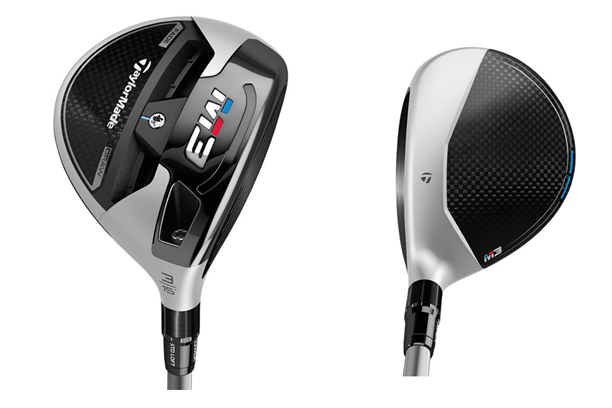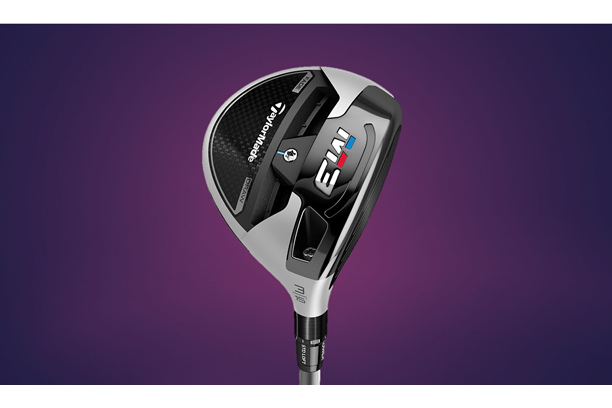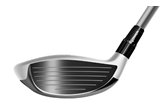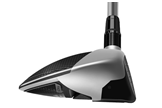TaylorMade M3 Fairway Wood Review
Last updated:
-
At a glance
- TG Rating
- Owner Rating
What we say...
The new TaylorMade M3 Fairway Wood takes the premium adjustable wood to the next level with a new composite crown and more moveable weight
Details
- RRP: £279.
- Loft: 15° (3), 17° (3HL), 19° (5), LH 15° (3) and 19° (5).
- Shafts: MCA Tensei Blue shaft in A, R & S flexes (65g) and X flex (75g).
The new TaylorMade M3 fairway wood takes a premium, adjustable fairway to the next level; constructed with a 450 stainless steel body, strong Ni-Co C300 face and new, thinner 5-layer carbon composite crown (the same as the M3 & M4 drivers).
An improved track system that houses more moveable weight (29 grams compared to 25 in the ’17 M1 fairway) allows for the adjustment for preferred shot shape; from fade to draw, more than ever before.
More Reviews
TaylorMade M4 Fairway Wood
TaylorMade M3 Driver
TaylorMade M4 Driver
TaylorMade M3 Hybrid
TaylorMade M4 Hybrid
According to TaylorMade, where the ’17 M1 fairway broke innovation and performance barriers by being both adjustable and incredibly long, a goal the engineering team set in the conception stage and executed in its creation, the new TaylorMade M3 fairway moves this on even further.
TaylorMade M3 Fairway Review: You need to know
Improvements over the previous M1 include a 5-layer carbon crown, longer speed pocket and improved weight track system, giving you more weight (29g to 25g in M1) to position and better influence shot shape. TaylorMade say like a driver expect the low, forward CG to deliver high launch with low spin. An adjustable hosel means you can dial in a specific loft and lie to suit your own game and eye.
TaylorMade M3 Fairway Review: We say
Our friendly fitters over at The Belfry tell us for every 10 TaylorMade fairways they sell one’s M3 while nine are M4s. It tells a very important story to club golfers. Everything about the M3 is geared to the wants and desire of better players. The headsize is 37cc smaller than the M4 (3 wood), there’s an adjustable hosel, a sliding shot bias sole weight and full-length face grooves.
To our minds we reckon it’s a cheeky little fairway which we love but there’s no hiding how it’s just too much (particularly when the excellent M4 is significantly cheaper) for the majority of club golfers. Thanks to our test data we reckon if you’re not trying to dial in a particular shot shape, locating the 29g sole weight behind your typical impact location is a really good shout for increasing ball speed.
TaylorMade M3 Fairway Review: Verdict
TaylorMade need to cater for a heck of a lot of tour players, the M3s adjustable hosel and sliding sole weight lets them, for certain players manipulate spin or shot bias in a way many club golfers don’t require. It’s a necessary part of their range, but unless you’re the 1 in 10 golfers looking for very specific launch conditions it’s highly likely the awesome M4 will perform better for you.
TaylorMade M3: Key Features. Read all about the ultra-light crown, new face material, sliding weight track, smaller head and why this club doesn’t include Twist Face.
TaylorMade M3 Fairway Review: Ultra-light crown and new face material
Similar to the new TaylorMade M3 driver, the new TaylorMade M3 fairway also utilizes an ultra-thin, ultra-light crown and sole panel. The combination of the composite panels saves up to 8g over a similarly shaped metal fairway, and the crown itself has 40% more carbon than the ’17 M1 fairway wood. The discretionary weight is placed low and forward into the M3’s clubhead to create driver-like launch conditions (high launch & low spin).
In addition to a new crown, the material of the face in the new TaylorMade M3 fairway has changed. Ni-Co C300 is actually not only stronger than the face material in the previous model, but both durability and speed have also been improved.
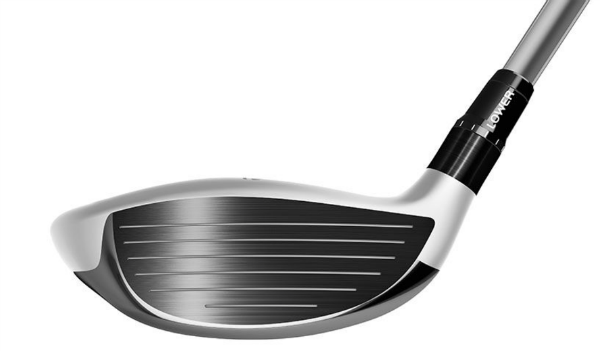
TaylorMade M3 Fairway: Sliding Weight Track
The sliding weight track (SWT) on the new TaylorMade M3 fairway, first introduced in a TaylorMade fairway with last year’s M1, incorporates a new, smaller Loft Sleeve crew. This allowed for TaylorMade’s moveable weight track to move 3.5mm forward, which resulted in the CG moving almost a full millimeter forward too, an 8% change over the ’17 M1 fairway.
Bringing the track forward led to a more streamlined overhang design which led to improving the sole to turf interaction for the M3 fairway. By designing an overhang that extends across the length of the track the playability of the sole was improved while allowing the weight track to be further forward.
TaylorMade M3 Fairway Wood: Smaller Screw head
The smaller screw head and port area to the Loft Sleeve also positively affects the Speed Pocket. By taking up less room on the sole, the Speed Pocket length from heel- to-toe on the M3 fairway is longer than the M1 2017 Speed Pocket.
The through-slot is extremely efficient in terms of size and material usage, giving TaylorMade the ability to package it in front of the track. The through-slot promotes faster face-flex and ball speed on mishits low on the face and also reduces backspin leading to more overall distance.
Brian Bazzel, VP Product Creation at TaylorMade said: “On the fairway wood essentially we’ve taken and utilised all of our materials to the n-th degree. We have our strongest face material, which we call Ni-Co C300 which is a super strong material that is able to flex and then there is 40% more carbon fibre, a speed pocket which has been lengthened and has more speed, more movable weight (29g), there’s no other fairway wood on the planet that has that much weight to move around.”
“The CG is down and forward, and there is a screw that goes in to the loft sleeve. The top of the screw – the diameter is smaller – which allowed us to take some of the on-set which usually is in a sleeved head and take it out. Secondly it allowed us to make our speed pocket longer, it allowed us to make our track forward and lengthen it a touch – all because we changed the diameter of the top of the screw which is in the loft sleeve. M1 is a great fairway wood, M3 is a better fairway wood and much of that is due to changing the top of that screw diameter.”
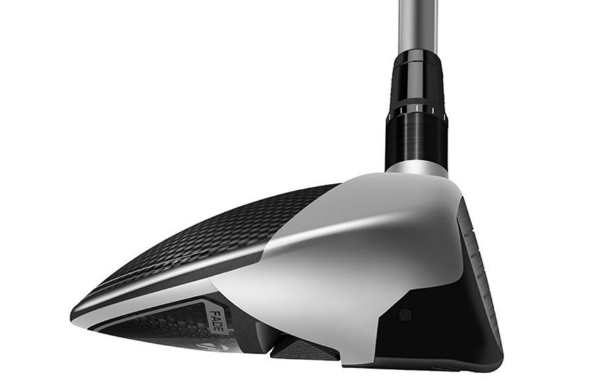
Why is there no Twist Face in the fairway wood?
Brian Bazzel: “We are still studying and trying to figure out if there is, in the smaller area that people hit fairway woods, is there a new contoured face that could improve the straightness of fairway wood shots. We’ve got a lot of flexing going on with the speed pockets so there’s a lot of dynamics and we don’t haphazardly put technology in products so we vet them out.”
“It was three or four years ago that we discovered the problem. It was 3 or four years it took to not only confirm the problem was there, create a solution, test the solution and put it in a product today that works better than anything else out there. And when you think of a lot of the technology that is in the products today, innovative technologies, you say where did that start –and a lot of them started at TaylorMade because we vet these things out and try to stay ahead of the curve, but we’re simply not there yet with fairway woods.”
NEXT: TaylorMade M3 and M4 Range Revealed; Drivers, Irons, Fairways and Hybrids
More Reviews
New M4 Fairway Wood
New TaylorMade M3 Driver
New TaylorMade M4 Driver
New TaylorMade M3 Hybrid
New TaylorMade M4 Hybrid
